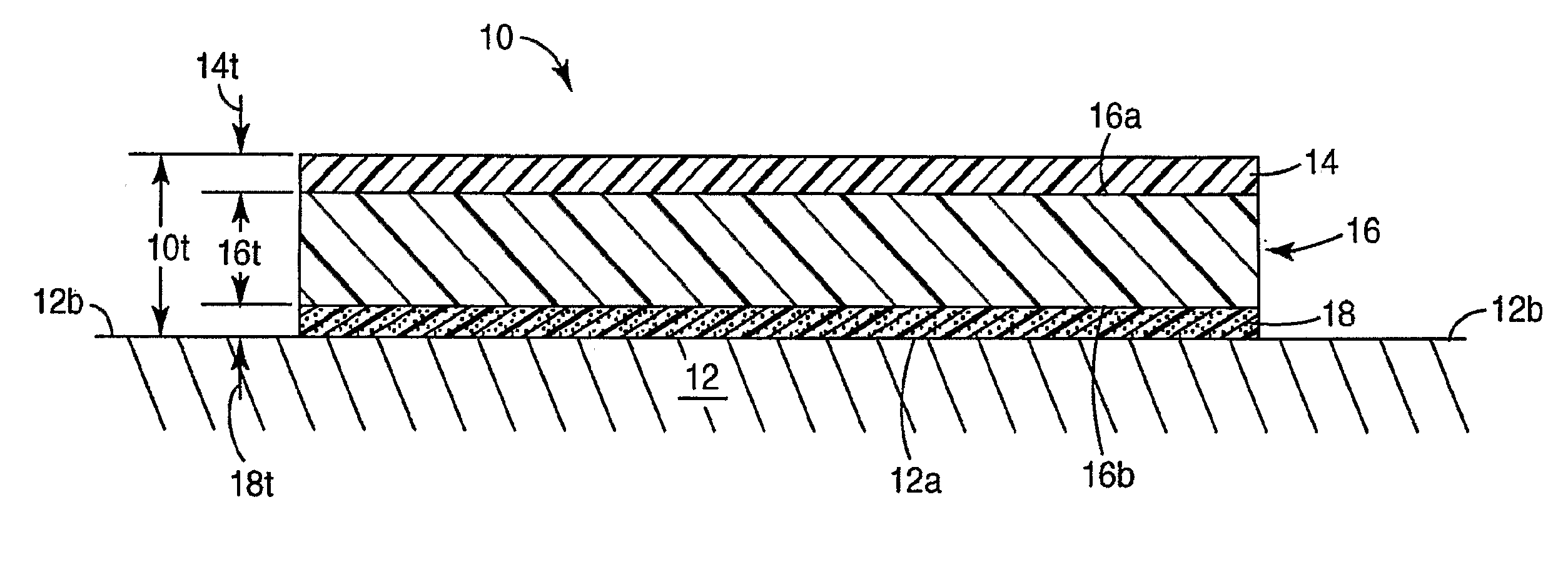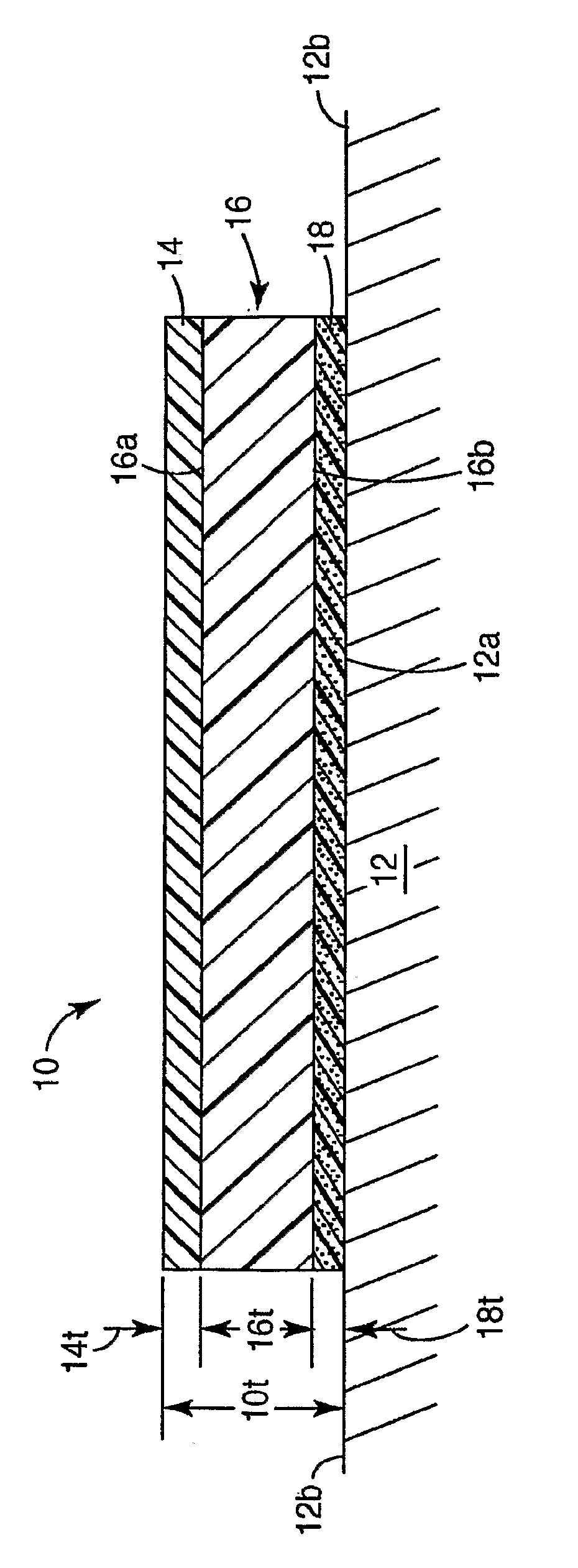Antimicrobial Adhesive Films
a technology of adhesive films and antimicrobials, applied in the field of antimicrobial films, can solve the problems of increasing health care costs and threatening human lives, and achieve the effect of reducing contamination on the surfa
- Summary
- Abstract
- Description
- Claims
- Application Information
AI Technical Summary
Benefits of technology
Problems solved by technology
Method used
Image
Examples
examples
[0066]The present invention is more particularly described in the following examples that are intended as illustrations only, since numerous modifications and variations within the scope of the present invention will be apparent to those skilled in the art. Unless otherwise noted, all parts, percentages, and ratios reported in the following examples are on a weight basis, and all reagents used in the examples were obtained, or are available, from the chemical suppliers described below, or may be synthesized by conventional techniques.
[0067]The following compositional abbreviations are used in the following Examples:[0068]“AgION”: A silver-containing inorganic zeolite food-grade antimicrobial agent, type AJ, which contains 2.5% silver, and which is commercially available under the trade designation “AgION” Antimicrobial from AgION Technologies, Inc., Wakefield, Mass.[0069]“Alphasan”: A silver zirconium phosphate, commercially available under the trade designation “ALPHASAN RC 5000” f...
example 12
[0102]A multi-layer film of Example 12 was prepared pursuant to the following procedure. A dispersion was prepared by combining 95 parts by weight of 3M SG composition with 5 parts AgION to provide a hardcoat mixture. The hardcoat mixture was shaken by hand to form a uniform dispersion, and then coated on a PET film using a Meyer rod #6. The hardcoat mixture was then cured using a Fusion Systems UV Processor (discussed above) at a belt speed of 45 feet per minute with two passes, which provided a total radiation dose of 250 milliJoules / centimeter2. This resulted in a two-layer film having an antimicrobial hardcoat layer laminated on a PET core layer, where the antimicrobial layer contained an AgION antimicrobial agent and a cross-linked matrix of 3M SG composition.
[0103]The film of Example 12 was tested for microbial load reduction and for zones of inhibition, as discussed above in Examples 1-11. The film of Example 12 exhibited a 100% microbial load reduction for both S. aureus (gr...
example 13
[0104]A multi-layer film of Example 13, which included two antimicrobial agents, was prepared pursuant to the following procedure. A hardcoat mixture was prepared by combining 5 parts silver glass, 10 parts DMAEMA-C16Br, and 85 parts 3M 906 Hardcoat. The hardcoat mixture was then coated on a PET film and cured pursuant to the procedure discussed above for Examples 1-11.
[0105]The film of Example 13 was also tested for microbial load reduction and for zones of inhibition, as discussed above in Examples 1-11. The film of Example 13 exhibited a 100% microbial load reduction for both S. aureus (gram positive) and Ps. aeruginosa (gram negative). Zone of inhibition testing showed no growth under the sample with S. aureus, moderate growth with Ps. aeruginosa, and no inhibition zones outside the sample disks. These results demonstrate the synergistic performance of the combined system where the silver has some mobility out of the film with excellent performance against gram positive bacteria...
PUM
| Property | Measurement | Unit |
|---|---|---|
| Fraction | aaaaa | aaaaa |
| Percent by mass | aaaaa | aaaaa |
| Percent by mass | aaaaa | aaaaa |
Abstract
Description
Claims
Application Information
 Login to View More
Login to View More - R&D
- Intellectual Property
- Life Sciences
- Materials
- Tech Scout
- Unparalleled Data Quality
- Higher Quality Content
- 60% Fewer Hallucinations
Browse by: Latest US Patents, China's latest patents, Technical Efficacy Thesaurus, Application Domain, Technology Topic, Popular Technical Reports.
© 2025 PatSnap. All rights reserved.Legal|Privacy policy|Modern Slavery Act Transparency Statement|Sitemap|About US| Contact US: help@patsnap.com



